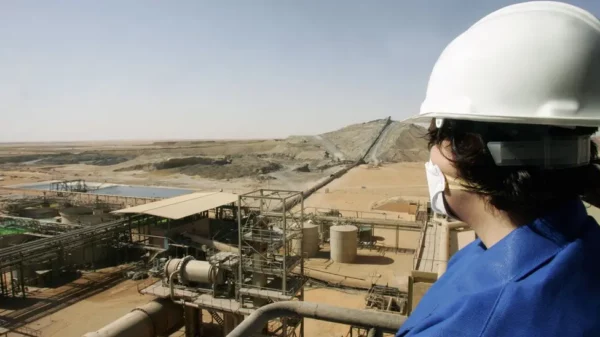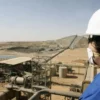French miner Eramet S.A. (EPA: ERA) and renewable energy company Électricité de Strasbourg (EPA: ELEC) have launched a new geothermal lithium production pilot project at the Rittershoffen plant in Eastern France.
On Tuesday, the companies announced the project which aims to demonstrate the effectiveness of the direct lithium extraction process in operating conditions at the geothermal plant operated by ÉS. The pilot project will run for a minimum of six months to ensure the long-term stability of the active lithium material. The final investment decision for the project is anticipated by the close of 2026.
In January, the companies partnered for the Alsace Géothermie Lithium project to recover sustainable lithium. The first geothermal projects testing the first phases have already been working with success at the Rittershoffen plant since 2020 and at the Soultz-sous-Forêts plant a year after.
Eramet expects industrial production for battery-grade lithium carbonate in the second quarter of 2024, with a targeted full ramp-up to 24,000 tonnes per year expected to be achieved by mid-2025.
The demand for lithium will continue to increase as countries shift their focus to carbon-free technologies and EV batteries grow in demand.
In 2019, over 60 per cent of lithium produced was utilized for the manufacturing of lithium-ion batteries. This demand is expected to grow to 500 per cent by 2050.
Read more: California’s Salton Sea lithium reserves could produce over 375 million EV batteries
Read more: Could Argentina be the next leading lithium producer worldwide?
How does geothermal lithium extraction work?
Geothermal energy refers to the heat stored beneath the Earth’s surface that is typically harnessed for electricity generation. An example of a geothermal energy source is the Salton Sea in California, where scientists recently found a potential source of more than 3,400 kilotons of lithium.
Other geothermal projects include the Imperial Valley plant in Southern California and the Calpine power company which operates The Gaysers and contributes to the state´s renewable energy portfolio.
The European Geothermal Energy Council found that a single geothermal energy plant –while costly– can produce electricity, heating, cooling and large amounts of lithium in a carbon-neutral process.

Schematic overview of an envisioned Combined Heat, Power and Metal extraction project. Diagram via European Federation of Geologists.
In geothermal plants, lithium-enriched brine is brought to the surface directly from geothermal wells. The heat carried by the brine is then utilized to generate renewable energy. The brine, now devoid of lithium, undergoes a separation process using electrolytic cells, which, compared to conventional metallurgical methods, have a lower environmental impact.
While this method is more environmentally friendly, even the initial phase of drilling exploratory wells carries some environmental impact. Extracting energy from the brine also poses challenges.
A study by the Institute of Energy and Climate Research showed that geothermal plants will become cost-competitive in conjunction with lithium extraction, even under unfavourable conditions, and could partially displace photovoltaics, wind power and storage from future renewable energy systems.
Traditionally, lithium is extracted from brine deposits, which are large underground reservoirs of salty water. These brines are often found in regions with high geothermal activity such as Chile and Argentina.
Roughly 90 per cent of lithium extraction takes place in Australia, Chile and China, and almost 100 per cent of its processing occurs in China, Chile and Argentina, most other countries in the world are completely dependent on lithium imports.
Read more: Lithium South Development technical report shows 40% increase in lithium recovery
Read more: Lithium South Development first production well installed at Hombre Muerto lithium project
Eramet’s extraction process is already in place in Argentina
Currently, the primary sources of exploited lithium are distributed, with 26 per cent originating from hard rocks such as granites, aplites, and pegmatites and 58 per cent derived from closed basin salt flats, known as Salars.
Operations at these salt deserts, situated in the Andes of Chile, Bolivia and Argentina, involve the extraction of brine from underground salt lakes, which is then brought to the surface and evaporated in extensive tanks. Following the evaporation process, the resulting salt solution undergoes further processing until the lithium is prepared for use.
Eramet’s patented direct lithium extraction process is already in place at the Centenario-Ratones lithium project in Argentina. The company aims to start commissioning its plant in early 2024.
Argentina has one of the largest sources of lithium worldwide and international investors have increased their investments in the country in recent years.
Lithium giants such as Albemarle Corporation (NYSE: ALB), Allkem Limited (ASX: AKE), POSCO Holdings (KRX: 005490), Livent Corporation (NYSE: LTHM) and other mid-tier miners such as Sigma Lithium Corporation (NASDAQ: SGML) (TSXV: SGML) (BVMF: S2GM34) and Lithium South Development Corporation (TSXV: LIS) (OTCQB: LISMF) (Frankfurt: OGPQ) continue to expand their operations as the demand for lithium increases.
Lithium South Development Corp. is a sponsor of Mugglehead News coverage
natalia@mugglehead.com














